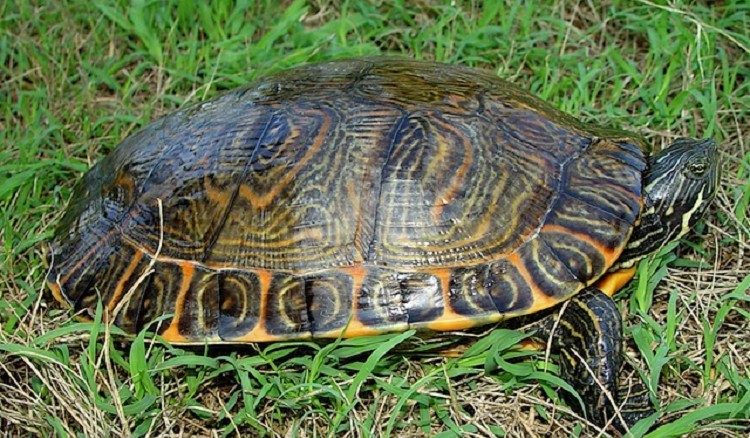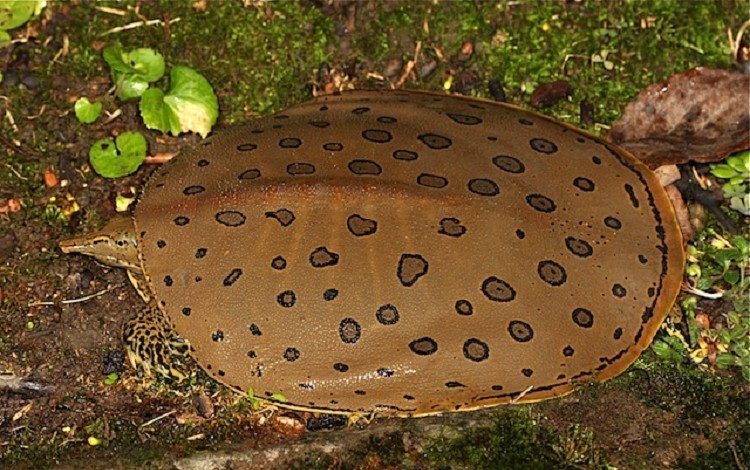Turtles of Tennessee
Turtles are a very special part of the ecosystem! They are also fun to observe! You will find many turtles hanging out along the banks of the Harpeth River, and all throughout Tennessee! But, many turtles are threatened or endangered.
Next time you are paddling along the Harpeth, count how many you see! Together, we can protect turtles and keep them happy and healthy! Here are a few of the different species of turtles that call the Harpeth River home.
Snapping turtle- Chelydra serpentine

Range in Tennessee: The Snapping Turtle is found statewide but less frequently spotted on the Cumberland Plateau.
Length: The average range for adults is between 8 and 20 inches from head to tail.
Description: The Snapping turtle is a large, heavy turtle that can be found in most bodies of water in Tennessee. The most distinguishable feature of the Snapping turtle from other turtles in Tennessee is their large pointed head. The shell of the snapping turtle ranges in color from brown to almost black. The tail of the Snapping turtle has a line of rough ridge like points .These turtles prefer muddy waters or waters with lots of vegetation to help them hide from potential prey. The Snapping turtle has a wide variety in diet. These omnivorous turtles will eat vegetation, insects, snakes, fish, frogs, or birds depending on what is available. Younger turtles eat more vegetation while older, larger turtle will lay motionless and ambush larger prey. Snapping turtle are less often seen basking on land, but often seen on top of the water with their heads visible.
River Cooter – Psedudemys Concinna

Range in Tennessee: Found in all major water systems in Tennessee including rivers and lakes.
Length: The average length for males and females is between 9 and 12 inches.
Description: The River Cooter is a medium sized turtle that has a brown to almost black top shell. The shell has a yellowish, orange boarder with orange lines making a pattern along the top of the shell. Yellow stripes are also visible on the head and neck of this turtle as well. Juvenile River Cooters have a more brightly colored shell compared to mature turtles. River Cooters inhabit areas with lots of aquatic vegetation because most of their diet comes from plants. These turtles are most often spotted basking on logs and are often seen in groups.
The Trionychidae are a taxonomic family of approximately 25 species of softshelled turtles. Unlike other turtles, the carapace, or upper shell, of these turtles lack scutes and is instead covered with a leathery skin. These turtles are extremely gifted swimmers because they are not weighed down by a heavy, hard shell. Tennessee is very lucky to be home to two of these species of turtles.
Smooth Softshell- Apalone mutica

Range in Tennessee: Occurs in the Tennessee and Cumberland River drainages
Length: Females range from six inches to 14 inches, while males are smaller and usually ranging between 4 and 7 inches.
Description: The Smooth Softshell turtle has a smooth, olive brown shell with small dots or blotches of black. A stripe is viable from the back of the eyes down the neck. The most obvious characteristic of this species is the long, narrow snout. This reptile prefers larger rivers with sandy or muddy bottoms. These turtles are extremely fast swimmers due to their flat bodies and light weight shells. Using their ability to swim is how they catch their prey. These carnivorous creatures eat crayfish, frogs, fish, insects, and worms. The most common way to spot this animal is to look for the long snout poking out of the water for air.
Spiny Softshell- Apalone spinifera

Range in Tennessee: The Spiny Softshell turtle is found statewide.
Length: The females range from 7 to 17 inches while males are smaller ranging from 5 to 10 inches.
Description: A round, flattened turtle with a brown upper soft shell. This species like the Smooth Softshell also has a long, tubular snout. The shell of the Spiny Softshell is rough like sandpaper and the spine is visible as a ridge along the top shell. While the females are longer overall, the tails of the males are actually longer than the females. Spiny Softshells prefer larger rivers and streams but will also inhabit lakes or ponds. This turtle can often be seen basking in the sun on fallen logs and rocks to absorb heat. They eat crayfish, tadpoles, and small fish. In many states this species is considered rare ,but in Tennessee we are lucky to still have a thriving population of Spiny Softshells.
